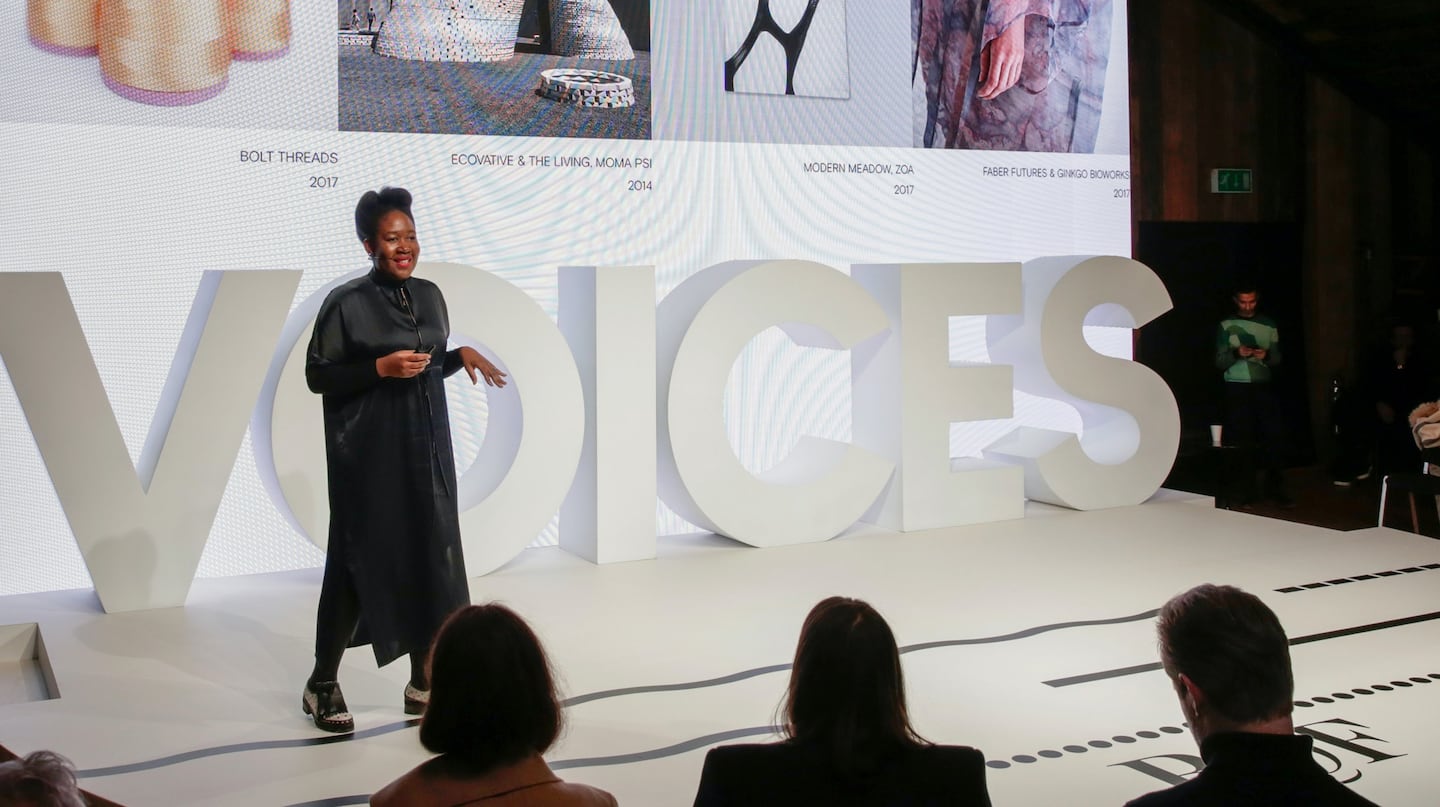
The Business of Fashion
Agenda-setting intelligence, analysis and advice for the global fashion community.

Agenda-setting intelligence, analysis and advice for the global fashion community.

OXFORDSHIRE, United Kingdom — Meet the rock star fashion materials of the future: algae, bacteria and fungi.
That's according to Natsai Audrey Chieza, founder of biodesign consultancy Faber Futures, who spoke Thursday at VOICES, BoF's annual gathering for big thinkers in partnership with QIC Global Real Estate.
Methods for tweaking cells and organisms have grown so sophisticated and accessible that labs increasingly collaborate with designers - from architects to fashion creatives - to dream up new uses for the technology.
In fashion, Bolt Threads is spinning spider "silk" from batches of modified yeast, and is working with Stella McCartney. Modern Meadow grows collagen from yeast which can be transformed into a leather-like material that can be poured as a liquid. Chieza's company is experimenting with bacteria that can be directed to dye fabrics, forming novel patterns and textures.
According to Chieza, the key to speeding along development of innovative new materials is to bring designers into the process as early as possible. More education is also needed to convince consumers and executives that lab-grown fabrics are the future.
All of these things are going to turn into one cacophony of ... ecological plenty.
“When you start to have a diversity of intellect address these problems some interesting things can happen,” Chieza said.
She added that biotechnology is one way fashion can overcome its looming resources problem. By 2050, the need to clothe 10 billion people will require the use of 350 million tons of non-renewable inputs annually, plus 70 million trees cut down to produce fabrics.
Recycling and replenishing are the main ways of mitigating the damage - and the most efficient methods for both are found only in nature, she said.
Collagen, the building block for hair and skin, can be produced from yeast, and could someday replace the need to raise and slaughter animals ranging from cows to alligators. Chieza said the bacteria dying process uses less water than conventional methods. Another faux-leather is grown from mushroom roots, which can be grown in trays inside a warehouse. VitroLabs is working on a process that uses stem cells to grow leather indistinguishable from the real thing.
“All of these things are going to turn into one cacophony of hopefully ecological plenty,” Chieza said.
To learn more about VOICES, BoF's annual gathering for big thinkers, visit our VOICES website, where you can find all the details on our invitation-only global gathering, in partnership with QIC Global Real Estate.
Related Articles:
[ How Biotechnology Is Reshaping FashionOpens in new window ]
[ When It Comes to Technology, Fashion Is Still a LaggardOpens in new window ]
The nature of livestream transactions makes it hard to identify and weed out counterfeits and fakes despite growth of new technologies aimed at detecting infringement.
The extraordinary expectations placed on the technology have set it up for the inevitable comedown. But that’s when the real work of seeing whether it can be truly transformative begins.
Successful social media acquisitions require keeping both talent and technology in place. Neither is likely to happen in a deal for the Chinese app, writes Dave Lee.
TikTok’s first time sponsoring the glitzy event comes just as the US effectively deemed the company a national security threat under its current ownership, raising complications for Condé Nast and the gala’s other organisers.